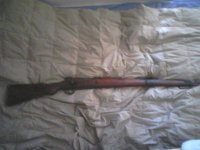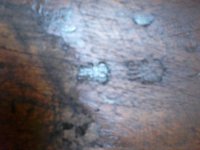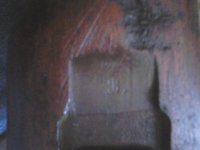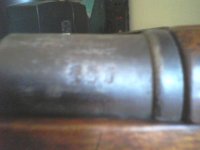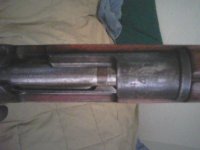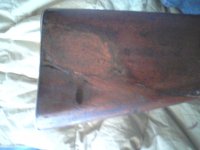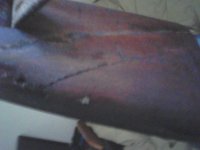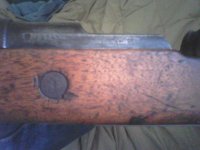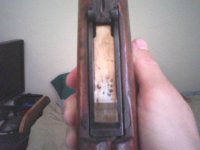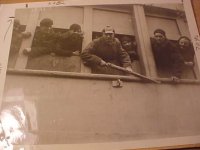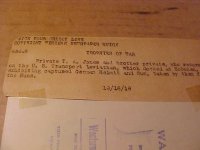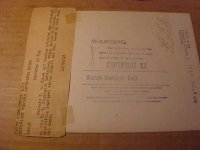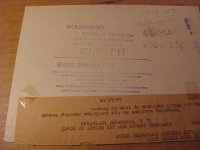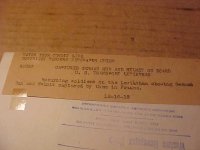HarvardBlue
Member
Hello!
Earlier this year I picked up a K98a manufactured by the Danzig arsenal in 1912.
No photos at the current moment, but I'll try and get some posted soon.
I have a few questions about the rifle, as I've had it a while but never been able to figure out anything about its history.
Its serial number is 2043, all numbers match except for the bolt. No Russian Capture or 1920 rework markings whatsoever.
The bore is good, though when I bought the rifle, the barrel had been slightly unscrewed (sights were tilted right a bit). Markings along the side of the lange-vizier sight indicate a crappy attempt at removing the barrel, though that's just my guess. I had the barrel tightened correctly a while back, however. The lange-vizier was also bent slightly, I had that corrected as well.
I also notice that the stock and wooden hand guard were both cut right where the barrel band holds them together. I epoxied them back together with some loctite stuff, it's held up remarkably well thus far.
The stock, besides being cut, is in pretty well-used shape. Lots of dents, dings, and the butt of the stock was smashed badly at one point, evidenced by an area filled in with wood filler and a large crack repaired sometime in the past by wood glue and a nail that manages to lie flush with the wood. All of the usual approval markings, such as the one on the wood just behind the trigger guard, and the markings on the right side of the butt of the stock are clearly visible.
I don't see any unit markings, or anything else, for that matter, on the buttplate tang. Because of this, I'm wondering if this rifle was ever issued to a unit. The buttplate's serial number matches all of the other parts, and is in like condition, so I'm quite certain it's the original. Any ideas as to why a pre-war rifle would have no unit markings? I'm just curious as to how the rifle got to America, and how much damage may have been done to it in Europe as opposed to over here.
Sorry for the novel, this is just one of those mysteries that has slowly driven me mad over the past eight months!
Earlier this year I picked up a K98a manufactured by the Danzig arsenal in 1912.
No photos at the current moment, but I'll try and get some posted soon.
I have a few questions about the rifle, as I've had it a while but never been able to figure out anything about its history.
Its serial number is 2043, all numbers match except for the bolt. No Russian Capture or 1920 rework markings whatsoever.
The bore is good, though when I bought the rifle, the barrel had been slightly unscrewed (sights were tilted right a bit). Markings along the side of the lange-vizier sight indicate a crappy attempt at removing the barrel, though that's just my guess. I had the barrel tightened correctly a while back, however. The lange-vizier was also bent slightly, I had that corrected as well.
I also notice that the stock and wooden hand guard were both cut right where the barrel band holds them together. I epoxied them back together with some loctite stuff, it's held up remarkably well thus far.
The stock, besides being cut, is in pretty well-used shape. Lots of dents, dings, and the butt of the stock was smashed badly at one point, evidenced by an area filled in with wood filler and a large crack repaired sometime in the past by wood glue and a nail that manages to lie flush with the wood. All of the usual approval markings, such as the one on the wood just behind the trigger guard, and the markings on the right side of the butt of the stock are clearly visible.
I don't see any unit markings, or anything else, for that matter, on the buttplate tang. Because of this, I'm wondering if this rifle was ever issued to a unit. The buttplate's serial number matches all of the other parts, and is in like condition, so I'm quite certain it's the original. Any ideas as to why a pre-war rifle would have no unit markings? I'm just curious as to how the rifle got to America, and how much damage may have been done to it in Europe as opposed to over here.
Sorry for the novel, this is just one of those mysteries that has slowly driven me mad over the past eight months!



